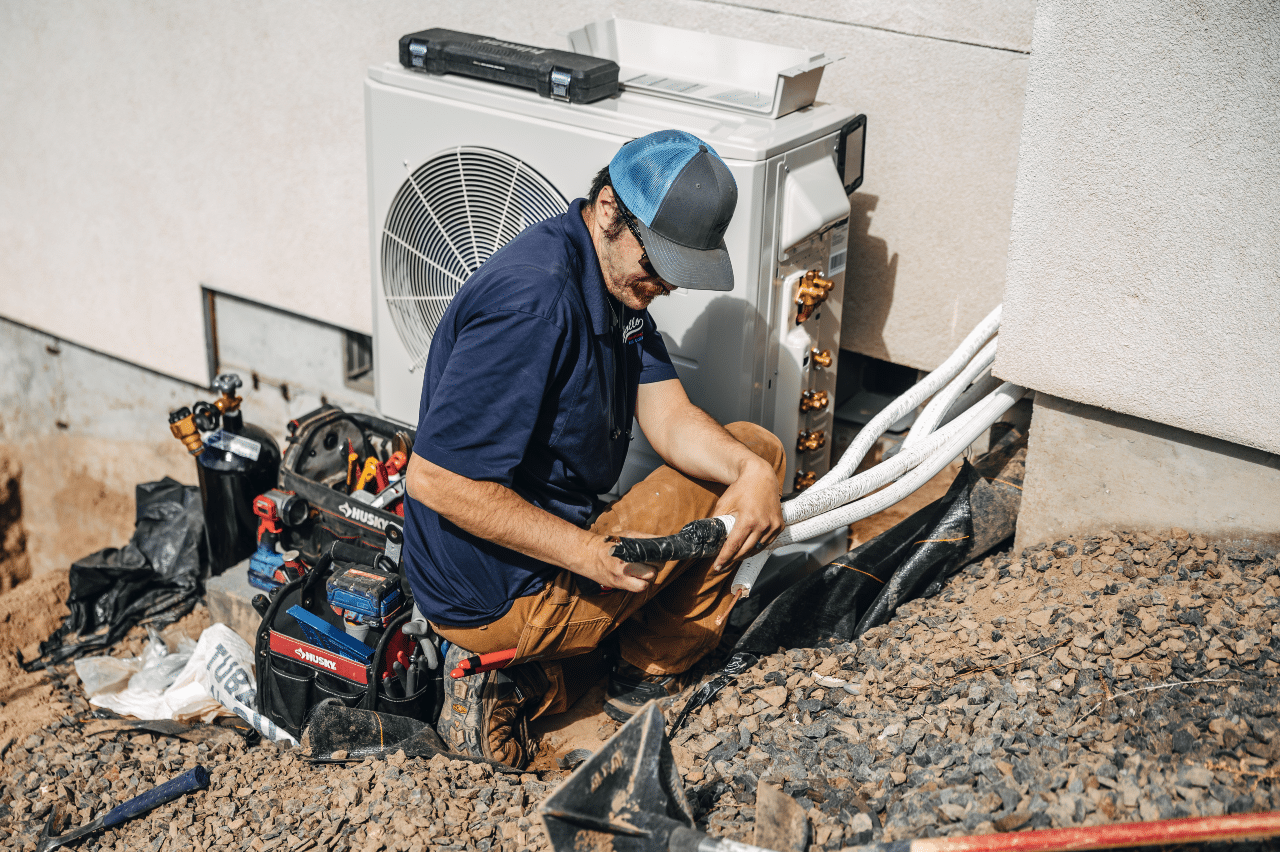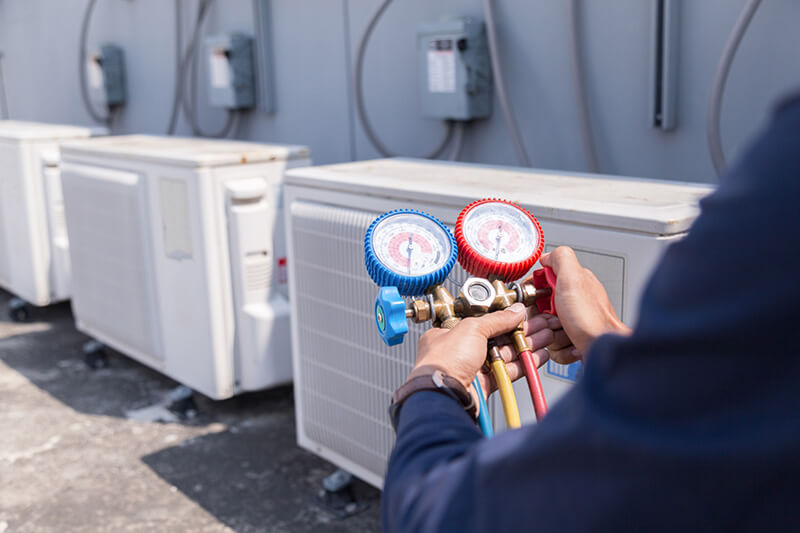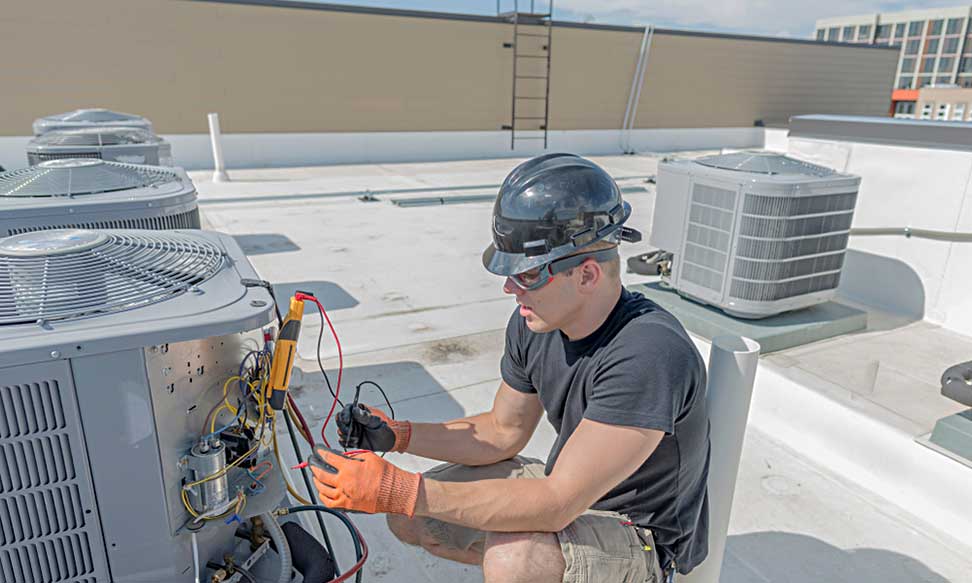Comparing Costs of Repair vs Full furnace replacement
Comparing Costs of Repair vs Full furnace replacement
Blog Article
Just How a Warmth Pump and Furnace Collaborate to Maximize Your Home's Heating Efficiency
Understanding just how a warmth pump and furnace job with each other is crucial for homeowners looking for effective heating services. Each system has its staminas, offering a well balanced technique to home comfort. The heat pump succeeds in moderate temperature levels, while the furnace provides rapid heat during extreme cold. This synergy not just reduces power prices but additionally enhances the life-span of both appliances. What elements influence this partnership, and just how can homeowners optimize their benefits?
Comprehending Heat Pumps: Exactly How They Work
Although lots of people may be not familiar with their inner functions, warm pumps play a crucial duty in modern-day heating unit. These tools operate by moving warmth from one location to an additional, using the concepts of thermodynamics. In chillier months, a heat pump extracts heat from the outside air, ground, or water, and transfers it inside your home to warm up the living space. Conversely, throughout warmer months, it can turn around the process, serving as an air conditioning system by expelling warm from inside to the outside.Heat pumps contain an evaporator, condenser, expansion, and compressor shutoff. The refrigerant within the system takes in heat as it evaporates at low temperatures and pressures. The compressor then boosts the stress and temperature of the cooling agent, enabling it to release warmth as it condenses. This reliable procedure can considerably minimize power intake contrasted to conventional heating methods, making warmth pumps a sustainable selection for climate control in homes.
The Function of Furnaces in Home Home Heating
Heaters play an important duty in home heating by providing a trusted source of heat throughout the chillier months. They run by generating heat through combustion or electrical resistance, dispersing it throughout the home using air ducts or glowing systems. The performance of a heater is commonly measured by its Yearly Gas Utilization Performance (AFUE) score, which indicates just how successfully the unit transforms fuel into heat.Furnaces can utilize different energy resources, consisting of all-natural gas, oil, gas, or power, permitting home owners to pick one of the most suitable alternative for their requirements. Unlike warmth pumps, which might struggle in extreme cold, heating systems maintain regular efficiency, making sure that indoor temperature levels continue to be comfortable no matter outdoor conditions. Additionally, modern-day furnaces typically come furnished with sophisticated modern technology, such as variable-speed blowers and wise thermostats, enhancing their efficiency and responsiveness. This convenience makes furnaces a vital part in all-inclusive home heating strategies.

Benefits of Making Use Of Both Solutions With Each Other
Incorporating the strengths of both furnaces and warmth pumps can result in an extra effective and reliable home heating option. Making use of both systems enables home owners to make the most of the heat pump's power performance during milder temperature levels while counting on the furnace for even more severe cold conditions. This dual strategy can substantially decrease power costs, as heatpump take in less electrical power than conventional home heating techniques when temperature levels are moderate.Additionally, using both systems with each other can boost comfort degrees in the home. Warmth pumps can provide regular, even heating, while heaters can quickly raise ambient temperature levels when needed. The integration of both systems can extend the life expectancy of equipment by reducing wear and tear on each unit, as they share the work. Ultimately, home owners can enjoy a balanced, cost-efficient home heating service that readjusts flawlessly to varying weather, ensuring a warm and welcoming home throughout the winter season months.
Exactly How Heat Pumps and Furnaces Enhance Each Other
They produce a corresponding home heating system that makes best use of effectiveness and comfort when homeowners integrate warm pumps and heating systems. Warmth pumps run by transferring warm from the outdoors air or ground, making them highly effective in moderate environments. They stand out during milder temperatures, giving cost-efficient heating. Conversely, furnaces create warm via combustion or electrical resistance, providing solid, instant warmth throughout extreme chilly conditions.The mix of these 2 systems permits dynamic changes based on temperature level variations. During warmer months or milder wintertime days, the warmth pump can take the lead, conserving power and reducing costs. As temperature levels drop, the furnace can effortlessly involve, ensuring regular warmth throughout the home. This synergy not just enhances energy usage however also enhances the life expectancy of both systems, as each unit runs within its suitable performance range. With each other, they create a well balanced atmosphere that adjusts to differing environment check this site out demands.
Maximizing Performance: Tips for Homeowners
Home owners can boost their heating performance through a number of practical approaches. Developing a normal maintenance timetable, incorporating smart thermostat innovation, and carrying out reliable insulation and securing remedies are crucial steps. These steps not only enhance comfort however likewise reduce energy expenses.
Normal Maintenance Arrange
To assure optimal home heating performance, developing a regular maintenance timetable is important for any home. Property owners ought to prioritize regular examinations of both informative post heatpump and furnaces to determine peak performance. This includes altering air filters every one to 3 months, as blocked filters can considerably reduce effectiveness. In addition, scheduling expert upkeep at the very least when a year enables specialists to identify and deal with potential issues before they intensify. House owners need to also cleanse the warmth pump's outside system to avoid debris build-up that can prevent air flow. By adhering to a routine maintenance timetable, home owners not only improve their heating systems' effectiveness but additionally prolong their life expectancy, causing better comfort and decreased energy expenses throughout the cooler months.
Smart Thermostat Assimilation
Incorporating a clever thermostat into a home heater can considerably boost power effectiveness, specifically as it enables exact control over temperature setups. These devices can discover the house owner's routine and choices, automatically changing the temperature to optimize comfort while minimizing energy usage. As an example, they can decrease heating throughout times when the home is vacant, lowering unneeded consumption. Several smart thermostats likewise provide real-time power usage data, allowing property owners to make educated decisions concerning their heating behaviors. In addition, remote gain access to by means of smartphone apps permits customers to change setups from anywhere, making certain the home is warm upon return. On the whole, smart thermostat combination not only enhances comfort however significantly adds to power financial savings and efficiency.
Insulation and Securing Solutions
Smart thermostats play an important role in power efficiency, but their effectiveness can be substantially enhanced by appropriate insulation and sealing options. House owners need to prioritize insulating floorings, attic rooms, and walls to minimize warmth loss. Top notch insulation products, such as spray foam or fiberglass, can considerably boost thermal resistance. Additionally, securing voids around windows, ducts, and doors prevents chilly air infiltration and heat escape. Weatherstripping and caulking are reliable approaches for resolving these leaks - heat pump installation ooltewah tn. Normal inspections for air leaks, together with the use of blower door tests, can aid determine problem locations. By spending in insulation and securing, house owners can enhance the efficiency of their heating unit, ultimately causing lowered energy consumption and reduced energy bills
Common Misconceptions Concerning Warm Pumps and Furnaces
What mistaken beliefs border warmth pumps and heaters? Many people erroneously believe that warmth pumps are inadequate in chillier environments. In reality, contemporary heatpump are developed to operate successfully also in reduced temperatures, giving trustworthy important source home heating throughout winter season. One more usual misconception is that heaters are always much more efficient than heatpump. This depends on the specific energy sources and effectiveness ratings of the systems in question. Some may likewise think that using both systems at the same time is unnecessary, yet in reality, this mix can maximize home heating efficiency, particularly during extreme climate problems. In addition, individuals usually assume that warm pumps call for constant maintenance, when in fact, they have comparable upkeep needs to standard heating systems. By debunking these myths, property owners can make even more informed decisions regarding their home heating alternatives, inevitably leading to boosted convenience and power performance in their homes.
Upkeep Factors To Consider for Combined Solutions

Regularly Asked Concerns
Can Heat Pumps Job Successfully in Exceptionally Cold Climates?
Heatpump can have a hard time in very cold environments because of reduced effectiveness and warm removal constraints. Nevertheless, innovations in technology have resulted in versions designed for far better performance in such conditions, boosting their viability in rough environments.
The Length Of Time Do Warm Pumps and Furnaces Usually Last?
Warmth pumps typically last 15 to twenty years, while heaters have a lifespan of 15 to three decades. Regular upkeep can prolong their long life, making certain efficient operation and minimizing the demand for premature replacements.

What Is the Average Price of Putting Up Both Equipments?
The ordinary price of setting up both a heat pump and a furnace typically ranges between $5,000 to $10,000 - furnace replacement. Variables influencing this expense include system size, installment intricacy, and regional labor prices
Are There Tax Rewards for Making Use Of Energy-Efficient Home Heating Solutions?
Numerous home owners inquire about tax rewards for energy-efficient heating unit. Numerous federal and state programs typically use discounts or credit reports, urging the adoption of sustainable innovations to lower power usage and promote environmental duty.
Exactly how Do I Select the Right Size Heatpump and Heating System?
Choosing the ideal dimension warmth pump and heating system involves computing the home's square video, taking into consideration insulation quality, and assessing local environment. Consulting a specialist can ensure ideal system efficiency and energy efficiency based on specific demands. heat pump service. Understanding just how a heat pump and heating system job together is crucial for house owners looking for efficient heating solutions. In cooler months, a warmth pump removes warmth from the outdoors air, ground, or water, and transfers it inside your home to warm the living room. When house owners integrate warmth pumps and heaters, they develop a corresponding home heating system that maximizes performance and comfort. Heat pumps operate by transferring heat from the outside air or ground, making them highly effective in modest climates. Heat pumps can struggle in very cold environments due to lowered effectiveness and warm removal restrictions
Report this page